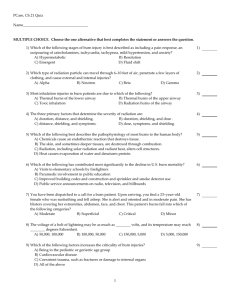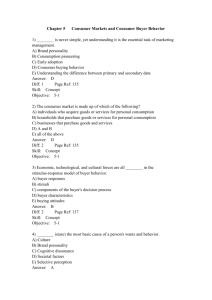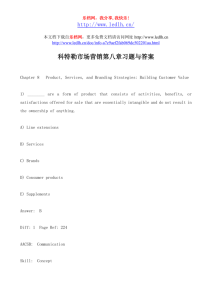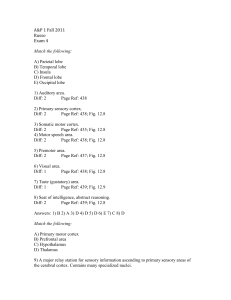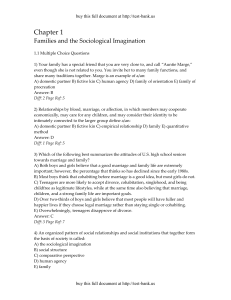CHEM102 Exam 3 Study Guide—Chapters 6, 17, 20, 21 (Tro
advertisement
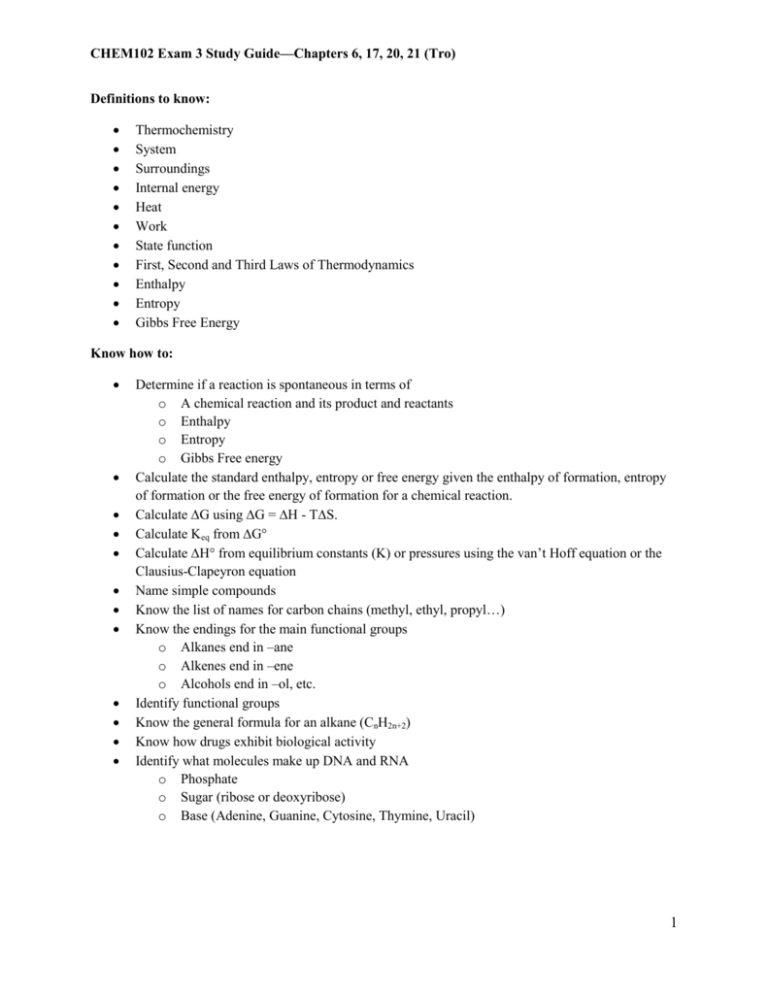
CHEM102 Exam 3 Study Guide—Chapters 6, 17, 20, 21 (Tro) Definitions to know: Thermochemistry System Surroundings Internal energy Heat Work State function First, Second and Third Laws of Thermodynamics Enthalpy Entropy Gibbs Free Energy Know how to: Determine if a reaction is spontaneous in terms of o A chemical reaction and its product and reactants o Enthalpy o Entropy o Gibbs Free energy Calculate the standard enthalpy, entropy or free energy given the enthalpy of formation, entropy of formation or the free energy of formation for a chemical reaction. Calculate ∆G using ∆G = ∆H - T∆S. Calculate Keq from ∆G° Calculate ∆H° from equilibrium constants (K) or pressures using the van’t Hoff equation or the Clausius-Clapeyron equation Name simple compounds Know the list of names for carbon chains (methyl, ethyl, propyl…) Know the endings for the main functional groups o Alkanes end in –ane o Alkenes end in –ene o Alcohols end in –ol, etc. Identify functional groups Know the general formula for an alkane (CnH2n+2) Know how drugs exhibit biological activity Identify what molecules make up DNA and RNA o Phosphate o Sugar (ribose or deoxyribose) o Base (Adenine, Guanine, Cytosine, Thymine, Uracil) 1 CHEM102 Exam 3 Study Guide—Chapters 6, 17, 20, 21 (Tro) 1) A sample of copper absorbs 43.6 kJ of heat, resulting in a temperature rise of 75.0°C, determine the mass (in kg) of the copper sample if the specific heat capacity of copper is 0.385 J/g°C. A) 1.51 kg B) 6.62 kg C) 1.26 kg D) 7.94 kg E) 3.64 kg Answer: A Diff: 2 Page Ref: 6.4 2) Which statement is FALSE? A) An exothermic reaction gives heat off heat to the surroundings. B) Enthalpy is the sum of a system's internal energy and the product of pressure and volume. C) ΔUrxn is a measure of heat. D) ΔUrxn is the heat of reaction. E) Endothermic has a positive ΔH. Answer: C Diff: 1 Page Ref: 6.6 3) How many of the following processes are accompanied by a positive entropy change? heating a pot of water dissolving sugar in water making ice cubes spilling a glass of milk melting an icicle A) 1 B) 2 C) 3 D) 4 E) 5 Answer: D 4) Consider a reaction that has a positive ΔH and a positive ΔS. Which of the following statements is TRUE? A) This reaction will be spontaneous only at high temperatures. B) This reaction will be spontaneous at all temperatures. C) This reaction will be nonspontaneous at all temperatures. D) This reaction will be nonspontaneous only at high temperatures. E) It is not possible to determine without more information. Answer: A 5) For the following example, identify the following. H2O(l) → H2O(s) A) a negative ΔH and a negative ΔS B) a positive ΔH and a negative ΔS C) a negative ΔH and a positive ΔS D) a positive ΔH and a positive ΔS E) It is not possible to determine without more information. Answer: A 2 CHEM102 Exam 3 Study Guide—Chapters 6, 17, 20, 21 (Tro) Diff: 2 Page Ref: 17.5 6) Above what temperature does the following reaction become nonspontaneous? 2 H2S(g) + 3 O2(g) → 2 SO2(g) + 2 H2O(g) ΔH = -1036 kJ; ΔS = -153.2 J/K A) 6.762 × 103 K B) 158.7 K C) 298 K D) This reaction is nonspontaneous at all temperatures. E) This reaction is spontaneous at all temperatures. Answer: A Diff: 3 Page Ref: 17.5 7) For a given compound, list the decreasing order of entropy for a liquid, solid, and gas A) solid > gas > liquid B) liquid > solid > gas C) gas > liquid > solid D) gas > solid > liquid E) solid > liquid > gas Answer: C Diff: 3 Page Ref: 17.6 8) Calculate ΔS°rxn for the following reaction. The S° for each species is shown below the reaction. S°(J/mol∙K) C2H2(g) + H2(g) → C2H4(g) 200.9 130.7 219.3 A) +112.3 J/K B) +550.9 J/K C) -112.3 J/K D) +337.1 J/K E) -550.9 J/K Answer: C Diff: 3 Page Ref: 17.6 9) Given the following equation, N2O(g) + NO2(g) → 3 NO(g) ΔG°rxn = -23.0 kJ Calculate ΔG°rxn for the following reaction. 3 NO(g) → N2O(g) + NO2(g) A) -23.0 kJ B) 69.0 kJ C) -69.0 kJ D) -7.67 kJ E) 23.0 kJ 3 CHEM102 Exam 3 Study Guide—Chapters 6, 17, 20, 21 (Tro) Answer: E Diff: 2 Page Ref: 17.7 10) Determine ΔG°rxn using the following information. H2(g) + CO(g) → CH2O(g) ΔH°= +1.9 kJ; ΔS°= -109.6 J/K A) +57.7 kJ B) -30.8 kJ C) +34.6 kJ D) -41.5 kJ E) +17.3 kJ Answer: C Diff: 3 Page Ref: 17.7 11) Identify the formula for an alkyne. A) CnH2n+2 B) CnH2n-2 C) CnH2n D) CnH2n-4 E) CnH2n+4 Answer: B Diff: 1 Page Ref: 20.3 12) Name the following compound. A) 4-methyl-4-propylpentane B) 4,4-dimethylheptane C) nonane D) 4-propyl-4-methylpentane E) 2-methyl-2-propylpentane Answer: B Diff: 3 Page Ref: 20.4 13) Name the following compound. A) 3-methyl-1-pentyne B) 3-methyl-4-pentyne C) 2-ethynebutane D) 1-hexyne E) 3-ethyl-1-butyne Answer: A 4 CHEM102 Exam 3 Study Guide—Chapters 6, 17, 20, 21 (Tro) Diff: 3 Page Ref: 20.5 14) Which of the following compounds is an ketone? A) CH3CH2CH2CO2H B) C) CH3CH2NH2 D) E) 15) Which of the following is an example of a secondary protein structure? A) fatty acid B) triglyceride C) lipid D) b-pleated sheet E) dipeptide Answer: D Diff: 1 Page Ref: 21.5 16) Identify the polysaccharide. A) maltose B) cholesterol C) galactose D) cellulose E) sucrose Answer: D Diff: 1 Page Ref: 21.3 17) The following is part of a DNA sequence. What is its complementary sequence? TCGTAAGCTTGCG A) AGCATTCGAACGC B) CGCAAGCTTACGA C) TCATTCAC D) GCGTTCGAATGCT E) TCGTAAGCTTGCG Answer: A Diff: 2 Page Ref: 21.6 5






